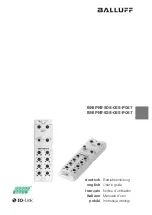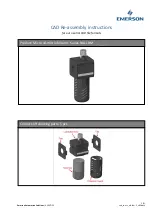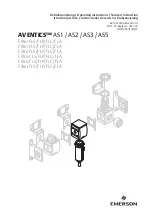
Section 2 - Service and Repair
Torque Hubs
104045-021 - AB62 Work Platform - European Model
Page 2-15
A
S S E M B L Y
O F
T
O R Q U E
H
U B
Refer to Figure 2-12 on page 2-17.
1. Press new bearing cups (7 & 12) into each side of the hub (11). It is recommended that bearing cups (7
& 12) and cones (6 & 13) be replaced in sets.
2. Assemble the bearing cone (6) into the cup (7) at the seal end of the hub (11) and press a new seal (5)
into the hub (11). Install the boot seal (4) on the hub (11) if the unit is so equipped.
3. Position the spindle (3) upright on a work bench. Lubricate the lips of the seal (5) and lower the hub (11)
onto the spindle (3). The hub (11) should be centered as it is lowered over the spindle (3) to prevent seal
damage.
4. Assemble the bearing cone (13) over the spindle (3). Press the bearing cone (13) over the spindle bear-
ing journal using a press and cylindrical Bearing Cone Driver (Service Kit 100254-020). Press the bear-
ing cone (13) down until the rollers just touch the cup (12). Take care to avoid pressing the cone (13) too
far.
NOTE:
If a press is not available, place the Bearing Cone Driver Tool over the spined end of the spindle (3) on the edge
of the bearing cone(13), and drive it into place with a hammer or mallet. If this method is used, care must be taken
to avoid damage to the bearing cone and spindle.
5. Install the thrust washer (14) with the tab in the keyway of the spindle and bearing nut (16). DO NOT
install the lock washer (15) at this time.
6. Clean the mating surfaces and apply a bead of silicone sealant to the face of the hub (11) that mates
with the ring gear (20). See the instructions on the sealant package. The hub (11) is attached to the ring
gear (20) with 18 3/8-24 grade 8 hex head cap screws (9) and flat washers (10). Torque the cap screws
to 70-81 Nm (50-52 ft/lbs.).
7. Place the Spindle Drive Tool (Service Kit #100254-020), over the spindle (3) and bolt or pin to the ring
gear (20). Make sure the center bolt of the Drive Tool is not touching the spindle and is prevented from
rotating by jam nuts provided on tool.
8. Check the initial rolling torque by installing a Nm (in/lbs) torque wrench (arm or dial type) on the center
nut of the Spindle Drive Tool and turning the hub (11) slowly and steadily with the torque wrench. Note
the mean torque. An initial bearing torque of greater than 81 Nm (52 in/lbs) with the boot seal installed
or 4,3-5,2 Nm (38-46 in/lbs) without the boot seal means that the cone (13) was pressed on to tightly in
step 4. In this case, back off the bearing cone (13) by pressing the spindle (3) out of the cone (13) until
the initial preload is relieved. See step 10 of the disassembly procedure.
9. Torque the bearing nut (16) with the Bearing Locknut Tool (Service Kit #100254-020) until a bearing roll-
ing torque of 4,8-5,7 Nm (42-50 in/lbs), with a boot seal installed, or 5,2 Nm (46 in/lbs), without a boot
seal, is reached. This may require several trials of pressing the cone (13) by torquing the nut (16) and
then checking the rolling torque. Rotate hub (11) by hand as nut is being tightened in order to seat the
bearings.
10. Up to 339 Nm (250 ft/lbs) of torque may have to be applied to the bearing nut (16) in order to press the
cone (13) into position.
11. Remove the bearing nut (16) and install the lock washer (15). Replace the bearing nut (16).
12. Re-torque the bearing nut (16) to 80-90 Nm (60-70 ft/lbs).
13. Secure the bearing nut (16) by bending a lock washer (15) tab into one of the four bearing nut slots. If no
tab aligns with a slot, the nut may be tightened until one of the slots aligns with a lock washer tab.
14. Assemble a washer (18), spring (19), a second washer (18), and a retaining ring (17) in the middle
grooves of the input shaft (2). Install a second retaining ring (17) in the groove near the small end of the
input shaft (2).
15. Assemble the splined end of the input shaft (2) down into the spindle (3).
16. Assemble the secondary carrier assembly (21) to the spindle (3) at the splines.
17. Assemble the primary carrier assembly (22) into the ring gear (20). It will be necessary to rotate the car-
rier to align the secondary sun gear (part of primary carrier assembly (22) with the planet gear teeth in
the secondary carrier assembly (21). Assemble the primary sun gear (24) over the input shaft (2).
Rotate the primary sun gear (24) to align the input shaft (2) to the gear splines and the gear teeth in the
primary carrier assembly (22).
















































